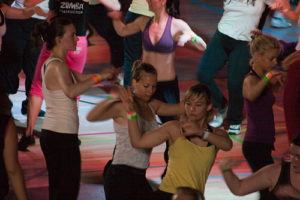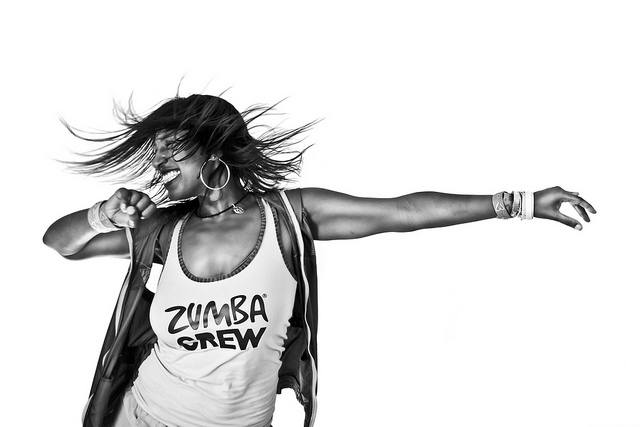The following is a guest post by Charlie Reid.
Music is my first love. As an overweight teen, I never gravitated well to sports. I traded in my skateboard for a guitar early on after numerous face plants.
I started planning my workouts with my music choices and found it helped me train. When I know I've got a heavy day ahead of me my iPod is chalked full of Dubstep like Skrillex.
This is a guide for you to select the most appropriate music for workout to improve enjoyment, motivation, and help you focus more. I've mixed research with my own listening ear to lay out what type of music works best for each situation. Years of creating and consuming music has led me to have a qualified ear when it comes to the proper tones and pitches for each situation.
I've divided each musical section into 4 categories: Low Skill/Low Intensity, Low Skill/High Intensity, High Skill/Low Intensity, and High Skill/High Intensity. This is a good starting point to assign music selections to, as each category requires a different amount of mental attention and/or arousal.
Low Skill/Low Intensity
(i.e.-Long, slow distance running, rowing, bicycling, etc)
Rhythmic music that matches the intensity of your pace to the cadence of the music is a good choice that can help limit fatigue and improve enjoyment. Research shows that when music is synchronized with submaximal exercise, it can improve work output (Karageorghis et al., 1997). Concomitantly, music can help buffer the affects of fatigue by lowering the rate of perceived exertion.
Hence the use of a "power" song during the final stretch of a road race, end of a spin class, or during a metabolic finisher at the end of a resistance training workout. Depending on how your workout schedule is set up, you may want some slower tempo songs for your recovery workouts and some faster paced songs for your harder workouts. A classic power song example would be Survivor's 'Eye of the Tiger' with a more contemporary example being Kanye West's 'Stronger'.
Low Skill/High Intensity (i.e.-Interval Cardio/Sprints)
These activities are fast-paced but don't require much movement proficiency, skill, or balance. This could be hill sprints, cycling sprints, pushing a sled, etc. Choose music that is higher tempo. A study on cycling to exhaustion showed that slow-to-fast music was the best for efficiency (workload/heart rate reserve ratio), and produced a higher workload (Szabo et al., 1999).
Experiment with slower music as a warm-up and then ramp the intensity up as you start your intervals, then inject something slower for cool-downs. I've taken a liking to Dubstep for doing sprint intervals. Bands include Skrillex, Nero, and Flux Pavilion.
High Skill/Low Intensity
(i.e.-Practicing a new movement you've never done before, Gymnastics, Olympic Weightlifting)
I'm fascinated in this category as I've yet to find any research on it. It's also the category that I spend a lot of time in as I coach my clients new movements. Could certain music be a distraction to motor learning? Yet to be determined, but turning your gym into a mini-rave is probably not the best choice for teaching the nuances of the squat.
I'm more concerned about volume than type of music for teaching skills. Also, I prefer to choose music without words as lyrics are distracting. It shouldn't hinder your ability to think and tune into your body. When in doubt, just turn the music off.
 High Skill/High Intensity
High Skill/High Intensity
(i.e.Max test day, Olympic Weightlifting, Gymnastics, etc).
If you're testing your 1-rep max in the deadlift, and proficient in the lift, find a song that brings up your arousal before the lift. However, when it comes time to lift the weight, I recommend silence. The reason is that maximal exertion with full body movements require concentration and micro-adjustments during the lift itself.
The research is also sparse on determining how music affects high skill tasks. One study noted an increase in performance of pre-selected karate drills with the test subjects listening to either white noise or music before the performance of the task (Ferguson et al., 1994). Some may see benefit in carefully selected motivational music before attempting a lift.
The Power lifts (Bench Press, Squat, and Deadlift) can handle a higher arousal level with more intense music, especially if you are proficient at them. However, the Olympic lifts are more technical and need less arousal to maintain focus and form.
Each athlete/trainee will require a different arousal rate based on their skill level, sport, and personal psychology. Personally experiment to find your optimal arousal rate. My favorite bands to listen to before lifts are Alice in Chains, Pantera, and Soundgarden.
Assemble your best playlists based on your workouts and do not discount the power of music before, during and after exercise.
References
Crust L. (2004). Carry-over Effects of Music in an Isometric Muscular Endurance Task.. Perceptual and Motor Skills: Volume 98, Issue 3, pp. 985-991.
Ferguson A, Carbonneau M, Chambliss C. (1994) Effects of Positive and Negative Music on Performance of a Karate Drill. Perceptual and Motor Skills: Volume 78, Issue , pp. 1217-1218.
Karageorghis, C. I.; Terry, P.C. (1997). The psychophysical effects of music in sport and exercise: a review. Journal of Sport Behavior. Volume 20, Issue 1, pp. 54-68.
Szabo A, Small A, Leigh M. (1999) The effects of slow- and fast-rhythm classical music on progressive cycling to voluntary physical exhaustion. The Journal of Sports Medicine and Physical Fitness. Volume 39, Issue 3, pp. 220-225.
Yamashita S., Iwai K. Akimoto T, Sugawara J, Kono I. (2006). Effects of music during exercise on RPE, heart rate and the autonomic nervous system. Journal of Sports Medicine and Physical Fitness. Volume 46, Issue 3, pp. 425-430.
Photo credits: Strep72 , A b u a b a r a, Cimm











